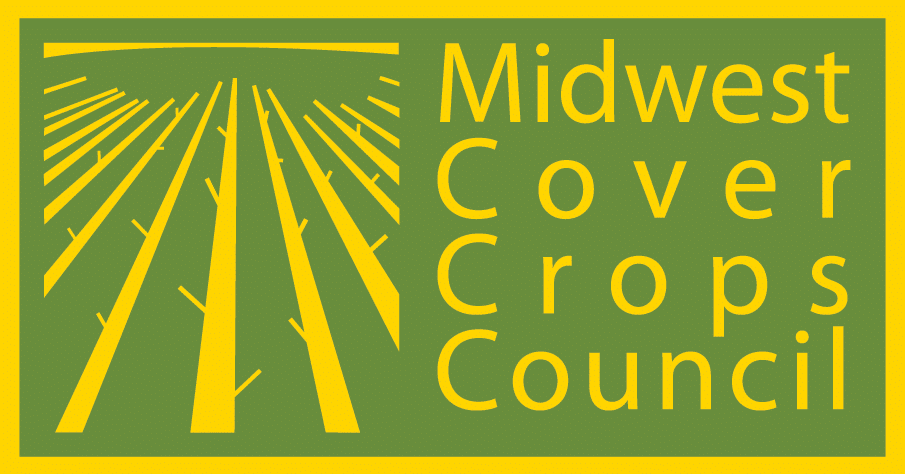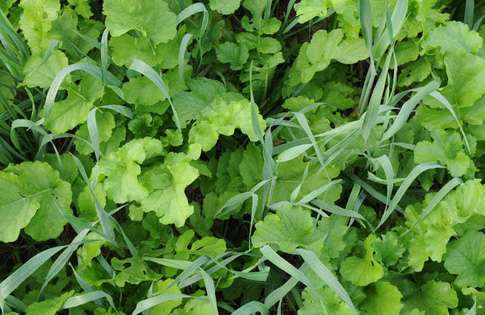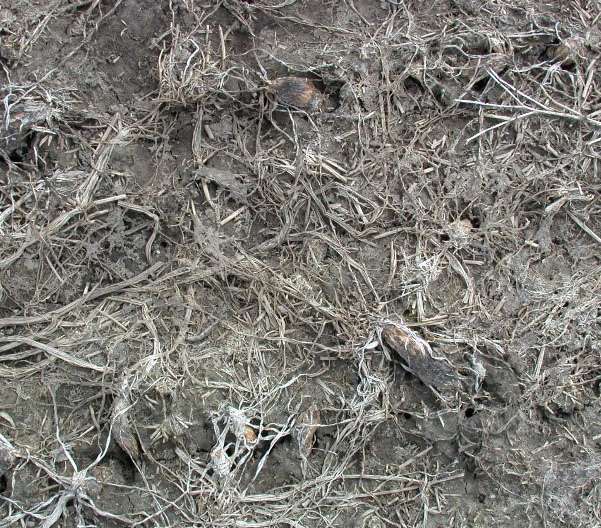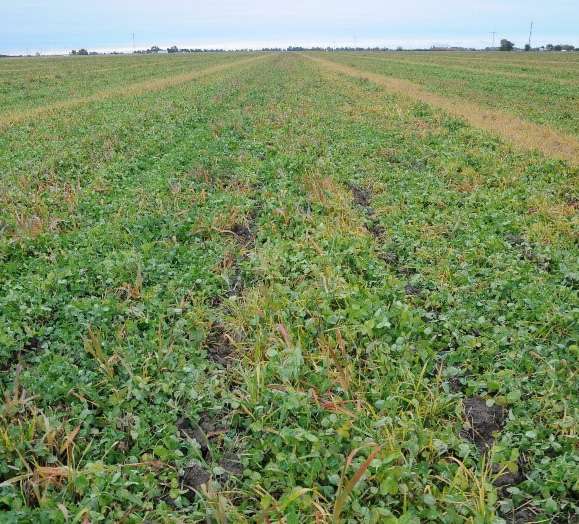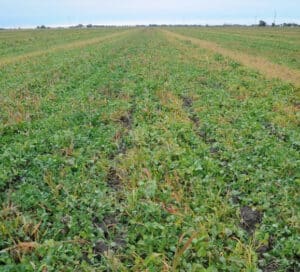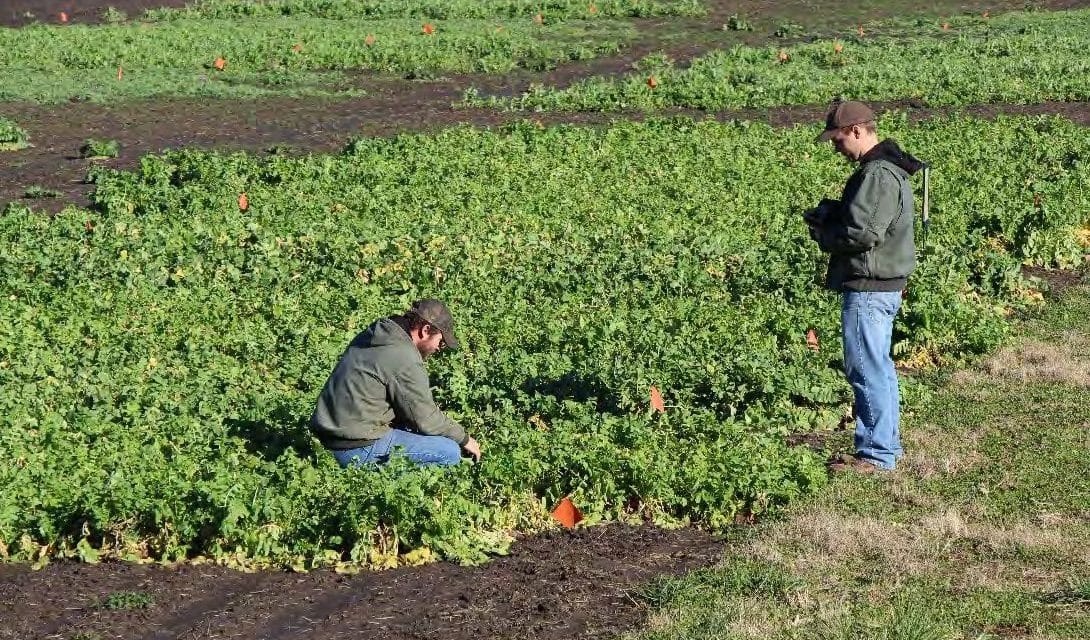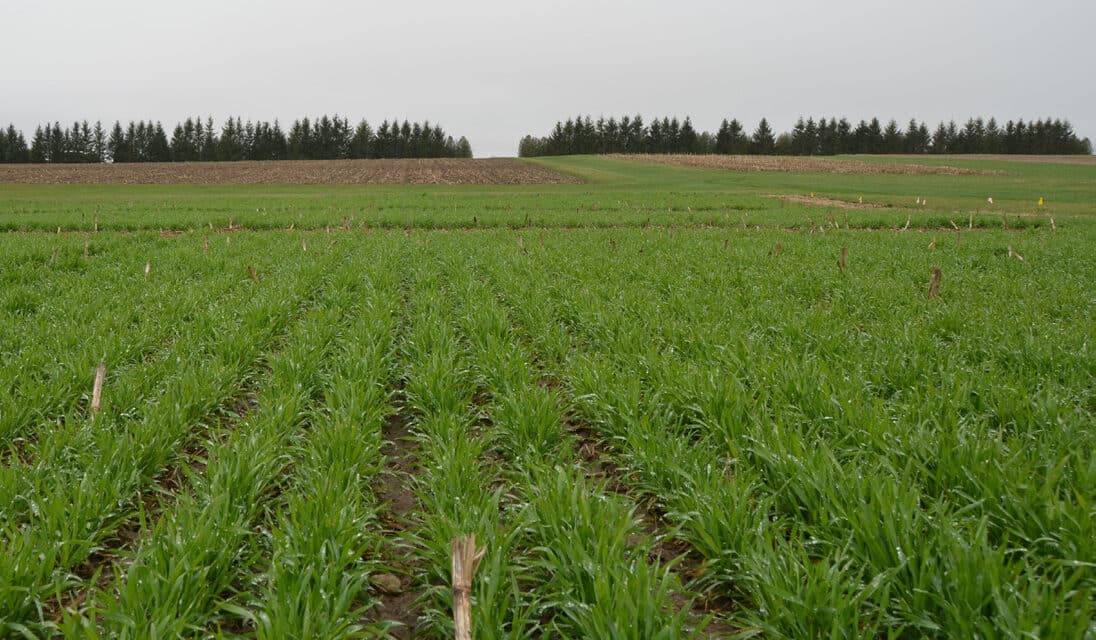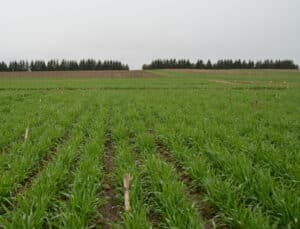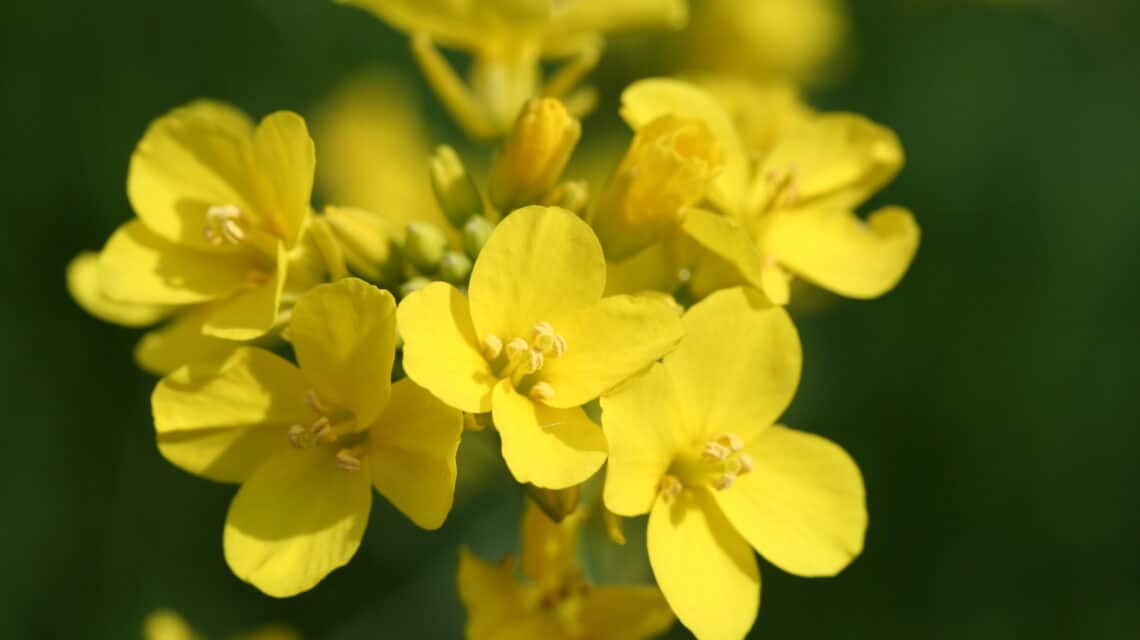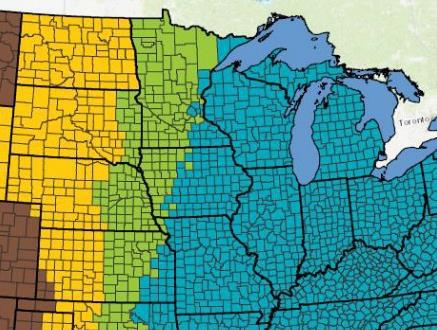Midwest Cover Crops Council (MCCC-129)
University of Guelph (SAG-FS-21-003)
This publication is intended to provide a starting point for farmers who are new to growing cover crops. With experience, many farmers fine-tune the use of cover crops for their systems.
Introduction
This recipe provides an introductory approach to integrating a cover crop mix of oats and radish after an early harvested processing vegetable, such as snap beans, cucumbers, peas, or early tomatoes. Both oat and radish can successfully establish in late summer to early fall and usually winter-kill. It is a low-risk mix that will help control tough perennial or winter annual weeds, minimize erosion, build soil structure, reduce compaction, and add some extra diversity to your rotation.
Planning and Preparation
- Planning—Keep it simple. Start small on one field. Be timely. Prioritize cover crop management based on your goals. Fine-tune the recipe for your needs over time. If cole or other Brassica crops are grown in the rotation, it’s best to use peas instead of radish in order to avoid a buildup of pest pressures.
- Vegetable planting—No modifications to the crop are required for the successful use of cover crops.
- Residual herbicides—Oats and radish are tolerant of most herbicides applied to the vegetable crop in-season.
- Seed purchase—Seed supplies and prices can vary depending on the time of year; it is good practice to order seed early (before harvest). The Ontario Ministry of Agriculture, Food and Rural Affairs (OMAFRA) has compiled a list of reputable cover crop seed suppliers (see Resources).
- Fertility or manure—Fall fertilizer incorporation can damage the living cover crop. Plan for fertilizer or manure application before planting the cover crop or after the cover crop winter-kills, or use a low-disturbance injection method to minimize damage.
Summer/Fall Work
- Vegetable harvest—Ensure that crop residues are spread evenly. Some light tillage can help with residue breakdown under the cover crop canopy. If the field was heavily tracked or rutted during harvest, level the field with tillage. For early harvested vegetables, such as peas, waiting a few weeks may allow for breakdown of crop residues and improve the seedbed for the cover crop.
- Timing of planting—Plant the oat-radish mix between mid-August and mid-September. Planting radish prior to August is not recommended as it will often result in flowering and seed production instead of quick coverage and biomass accumulation.
- Seeding rate in oats/radish mix—Mix seeds prior to planting. For oat, use 30–60 lbs/acre. Use the higher end of that range if manure application and/or erosion control are your goals; the lower end of that range should be sufficient if you want to build soil structure or have land covered. Radish should be seeded at no more than 2 lbs/acre if drilling and 2–3 lbs/acre if broadcasting.
- Planting method—An oat-radish cover crop can be planted with a drill at a depth of 0.50–0.75 inch or broadcast with light incorporation. An oat-radish cover crop can also be mixed with dry fertilizer, applied with a spreader, and then lightly incorporated.
- Fertility or liming—After most processing vegetables, extra nitrogen (manure or fertilizer) is not required. Use a current soil test (no older than four years) to determine lime or phosphorus and potassium nutrient requirements for the next year’s crop. Fertilizers can be applied at the same time as seeding to reduce costs. Lime should be applied separately as it will need to be incorporated deeper than the cover crop seed.
- Manure—Up to 4 tonnes/acre of solid manure or litter can be surface-broadcast to growing oats and radish provided it is evenly distributed; otherwise it should be done prior to seeding. If injecting manure, low-disturbance injectors are available that will minimize damage to oats and radish. See Use and Management of Manure and Other Organic and/or Prescribed Materials in Resources for more information about recommended practices in Ontario.
- Tillage or no-tillage—The cover crop can be established with no tillage, but light tillage can help suppress weeds to allow the cover crop to get established. Fall full-width tillage is not necessary and minimizes the benefits of soil cover over the winter.
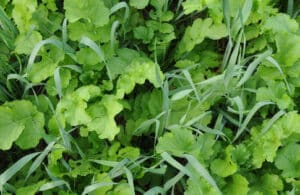
Spring Work
- Fertilizer—No modifications to a typical fertilization program are required after an oat-radish cover crop mix.
- Termination—Both oats and radish should winter-kill. However, mild winters and good snow cover sometimes allow overwintering of radish. If this occurs, it is easily terminated with a typical pre-plant herbicide application for broadleaf weeds.
- Direct-seeding—Most modern planters are fully capable of planting corn, soybean, or vegetables into the expected low spring-residue cover from an oat-radish mix. But if direct-sowing vegetables, consider strip or zone tillage to prepare the seedbed. Check planting depth and seed furrow closure shortly after beginning to plant as some adjustments may be needed.
- Transplanting—Scout fields early and adjust timing of operations accordingly. An oat-radish cover crop reduces winter annuals, such as chickweed, so tillage for weed control may not be necessary. Cover crop residues can slow the early spring drying and warming of the soil, particularly for early crops such as cole crops; it is unlikely to affect warm-season crops such as tomatoes.
- Scouting—After planting, scout for crop emergence and population. Additionally, scout for weeds since cover crop residue on the soil surface can delay the emergence of annual weeds, which may delay the application of post-emergence herbicides.
Resources
Cover Crop Selector Tool —available from Midwest Cover Crops Council
Best Management Practices: Winter Cover Crops (OMAFRA)
Cover Crop Seed Suppliers (OMAFRA)
Use and Management of Manure and Other Organic and/or Prescribed Materials (Ontario Soil and Crop Improvement Association Infosheet #17)
Guide to Weed Control: Hort Crops (OMAFRA publication 75B)
Vegetable Crop Protection Guide (OMAFRA publication 838)
Vegetable Production Information—Commercial Vegetable Production (OMAFRA)
Authors
Jordan Grigg, Cameron Ogilvie, and Laura Van Eerd, University of Guelph; and Anne Verhallen, OMAFRA (Note: This publication was adapted with consent from MCCC under a joint project to produce customized introductory guidance about cover crops for all member states/provinces.)
Reviewers and Contributors
Kris McNaughton, University of Guelph, and Elaine Roddy, OMAFRA
The Midwest Cover Crops Council (midwestcovercrops.org) aims to facilitate widespread adoption of cover crops throughout the U.S. Midwest and Ontario by providing educational/outreach resources and programs, conducting new research, and communicating about cover crops to the public.
Funding for this project was provided by McKnight Foundation.
November 2021
The U.S. Department of Agriculture (USDA) prohibits discrimination in all its programs and activities on the basis of race, color, national origin, age, disability, and where applicable, sex, marital status, familial status, parental status, religion, sexual orientation, genetic information, political beliefs, reprisal, or because all or a part of an individual’s income is derived from any public assistance program. (Not all prohibited bases apply to all programs.) Persons with disabilities who require alternative means for communication of program information (Braille, large print, audiotape, etc.) should contact USDA’s TARGET Center at (202) 720-2600 (voice and TDD). To file a complaint of discrimination write to USDA, Director, Office of Civil Rights, 1400 Independence Avenue, S.W., Washington, D.C. 20250-9410 or call (800) 795-3272 (voice) or (202) 720-6382 (TDD). USDA is an equal opportunity provider and employer. ©2021 by MCCC. All rights reserved.
